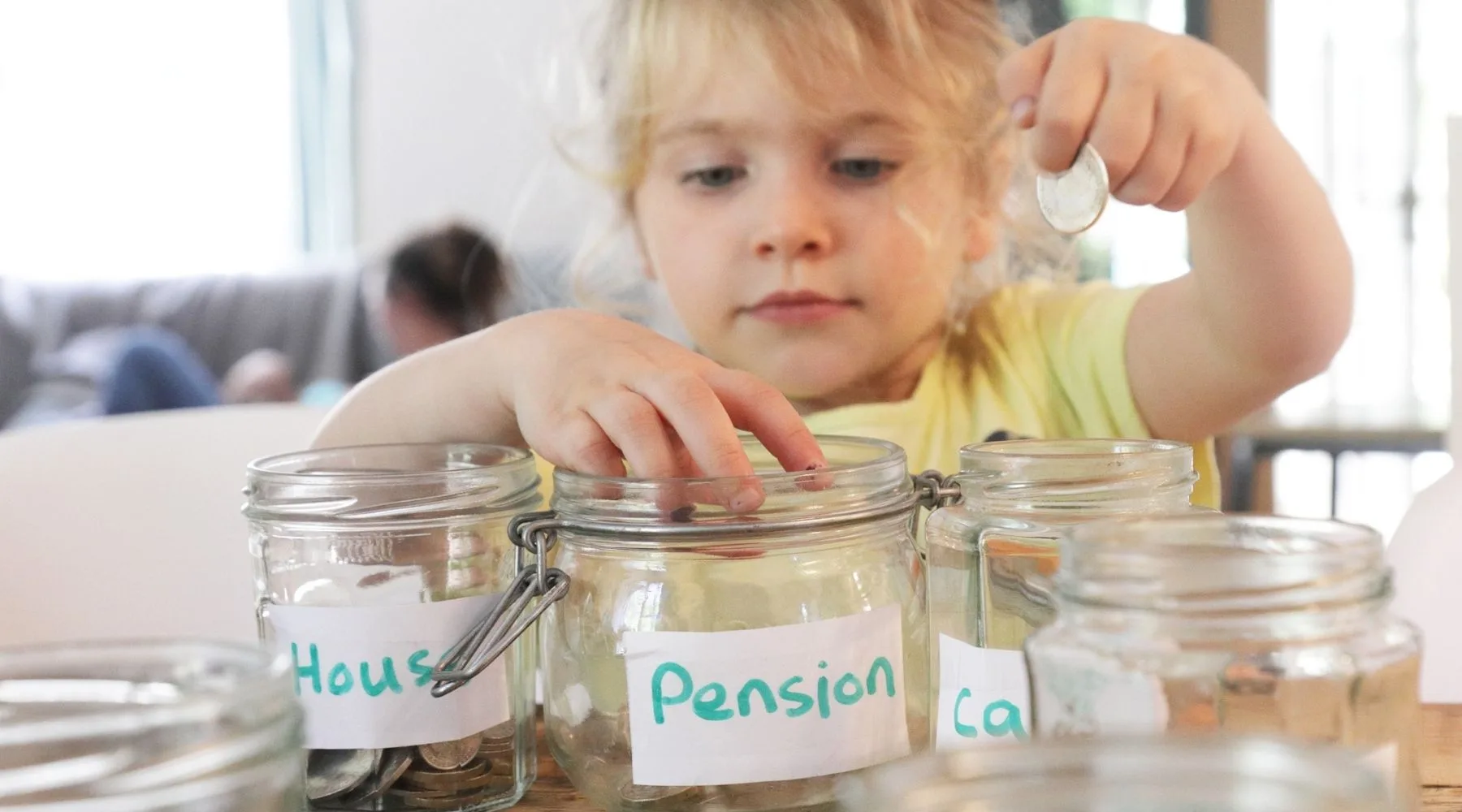Changes to the pension explained and what it means for you

Pension payments are increasing. Here's a breakdown of the changes and how they will affect you.
Australian pensioners will have slightly more cash in their pockets from 1 July, as the government has updated the pension deeming rate. Here I'll explain exactly what this rate is, what it applies to and how it will affect your (or your loved one's) pension.
What is the deeming rate?
Every Australian pensioner has a different number of investments, whether they be savings accounts, term deposits, shares or investment properties. The income earned from these investments needs to be taken into account when determining government-funded pension payments. Rather than assessing each pensioner's investment individually, the same rate is applied to all pensioners depending on whether they are in a relationship or they own a home. This rate reflects the return that the government deems you make from your investments, hence, the deeming rate.
How has the deeming rate changed?
Savings interest rates are directly influenced by the RBA cash rate. As we have seen two cuts to the cash rate this year, savings account and term deposit interest rates have dropped accordingly. This, along with several other factors, means that pensioners will likely be making less from their investments than they were a year ago. To reflect this, the deeming rates are being changed.
| Status | Total investments | Old rate | New rate |
|---|---|---|---|
| Single | $0-$51,800 | 1.75% | 1.00% |
| Single | $51,801+ | 3.25% | 3.00% |
| Couple | $0-$86,200 | 1.75% | 1.00% |
| Couple | $86,021+ | 3.25% | 3.00% |
What assets are affected by these changes?
All pensioners are determined to have two types of assets – deemed and non-deemed. Deemed assets include cash-based assets, which have the potential to make interest or earn a return, such as savings, term deposits, superannuation, share portfolios and investment properties. Everything you own besides your home, including your car and home contents, are generally considered non-deemed assets, as they cannot create a direct income. The deeming rate is only applied to deemed assets.
How are these deductions applied?
The value of all assets and the estimated earnings from deemed assets are both taken into account when calculating a pension payment. All pensioners start with a full potential pension of $926 per fortnight for a single person or $1,396 for couples. Two tests are applied to determine how much is deducted from this amount based on a pensioner's financial stability. These are called the income test and the asset test.
The income test (applied to deemed assets)
The deeming rate above is used to determine an assumed income on all deemed assets. For example, a single home-owning pensioner with $200,000 in savings and investments is deemed to earn $191 per fortnight from these investments. A single person can earn up to $174 per fortnight without this income having any effect on their pension. Pension payments are then reduced by $0.50 for every $1.00 earned per fortnight up to the upper earning limit of $2,026.40 per fortnight. Any earning over this amount results in a pension payment of $0.
| Status | Lower limit | Upper limit |
|---|---|---|
| Single | $174 | $2,026.40 |
| Couple | $308 | $3,100.40 |
The difference between the lower-earning limit ($174) and the deemed earnings ($191) is multiplied by 0.5 to determine the income-based deduction. In this case, the potential pension payment of $926 is reduced by $9 to a post-income-test fortnightly payment of $917.
The asset test (applied to non-deemed assets)
Non-deemed assets are added to deemed assets to determine total assets. For example, if the same single home-owning pensioner had a total of $50,000 worth of vehicles and home contents, their total assets would be $250,000. The same process as above is applied to the total value of all assets, with $3 being deducted from the potential pension for every $1,000 above the lower limit.
| Status | Lower limit | Upper limit |
|---|---|---|
| Single | $263,250 | $572,000 |
| Single homeowner | $473,750 | $782,500 |
| Couple | $394,500 | 860,000 |
| Couple homeowners | $605,000 | $1,070,500 |
In this case, $250,000 of assets would result in no deduction, as it falls below the lower limit. The post-asset-test pension amount is, therefore, the full pension, $926.
So which is applied?
The lower of the two post-test figures is the final pension paid. In this case, our single pensioner would receive a pension of $917 per fortnight.
Examples
| Pensioner type | Deemed assets | Non-deemed assets | Asset test | Income test | Pension per fortnight | Extra payments after deeming rate changes |
|---|---|---|---|---|---|---|
| Single homeowner | $100,000.00 | $50,000.00 | $926.20 | $926.20 | $926.20 | $0.00 |
| Single homeowner | $200,000.00 | $60,000.00 | $926.20 | $917.74 | $917.74 | $14.60 |
| Single homeowner | $300,000.00 | $70,000.00 | $605.95 | $860.05 | $605.95 | $0.00 |
| Single homeowner | $400,000.00 | $80,000.00 | $275.95 | $802.35 | $275.95 | $0.00 |
| Single homeowner | $500,000.00 | $90,000.00 | $0.00 | $744.66 | $0.00 | $0.00 |
| Single non-homeowner | $100,000.00 | $50,000.00 | $926.20 | $926.20 | $926.20 | $0.00 |
| Single non-homeowner | $200,000.00 | $60,000.00 | $926.20 | $917.74 | $917.74 | $14.60 |
| Single non-homeowner | $300,000.00 | $70,000.00 | $926.20 | $860.05 | $860.05 | $19.40 |
| Single non-homeowner | $400,000.00 | $80,000.00 | $907.45 | $802.35 | $802.35 | $24.21 |
| Single non-homeowner | $500,000.00 | $90,000.00 | $577.45 | $744.66 | $577.45 | $0.00 |
| Couple homeowner | $100,000.00 | $50,000.00 | $1,396.20 | $1,396.20 | $1,396.20 | $0.00 |
| Couple homeowner | $200,000.00 | $60,000.00 | $1,396.20 | $1,396.20 | $1,396.20 | $13.13 |
| Couple homeowner | $300,000.00 | $70,000.00 | $1,396.20 | $1,343.28 | $1,343.28 | $22.71 |
| Couple homeowner | $400,000.00 | $80,000.00 | $1,139.70 | $1,285.58 | $1,139.70 | $0.00 |
| Couple homeowner | $500,000.00 | $90,000.00 | $809.70 | $1,227.89 | $809.70 | $0.00 |
| Couple non-homeowner | $100,000.00 | $50,000.00 | $1,396.20 | $1,396.20 | $1,396.20 | $0.00 |
| Couple non-homeowner | $200,000.00 | $60,000.00 | $1,396.20 | $1,396.20 | $1,396.20 | $13.13 |
| Couple non-homeowner | $300,000.00 | $70,000.00 | $1,396.20 | $1,343.28 | $1,343.28 | $22.71 |
| Couple non-homeowner | $400,000.00 | $80,000.00 | $1,396.20 | $1,285.58 | $1,285.58 | $27.52 |
| Couple non-homeowner | $500,000.00 | $90,000.00 | $1,396.20 | $1,227.89 | $1,227.89 | $32.33 |
Conclusion
As you can see, the resultant increase is relatively low. I estimate the average pensioner to earn about $1 extra per day, which is hardly breaking the bank. In fact, it seems a bit mad to presume that pensioners are earning 3% on their savings when the average online savings rate is under 0.50% right now – though active super funds could earn over 3%. The lesson here is that if you really want to maximise your savings, don't wait for your pension to do it for you. Look out for high interest savings accounts with solid ongoing rates, such as UBanks's USaver account, which took out the best savings account category at this year's Finder Awards. Or compare savings accounts for pensioners and retirees, which offer easy access to your funds and competitive interest on your whole balance.
Graham Cooke's Insights Blog examines issues affecting the Australian consumer. It appears regularly on finder.com.au. For regular updates check out twitter @gcooke42.
Picture: Getty/Shutterstock

